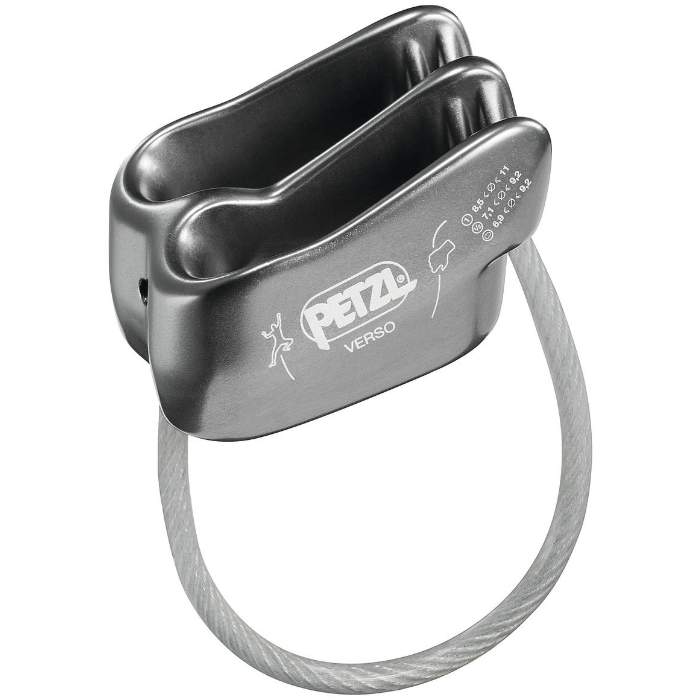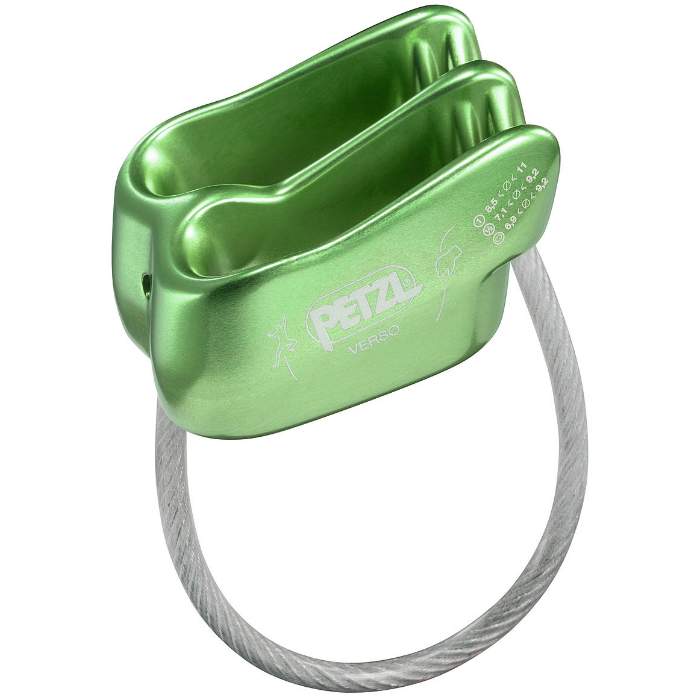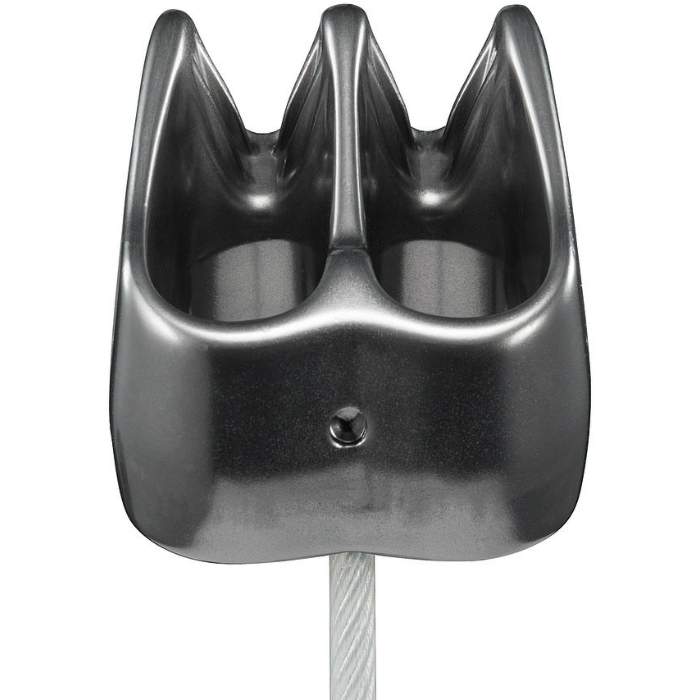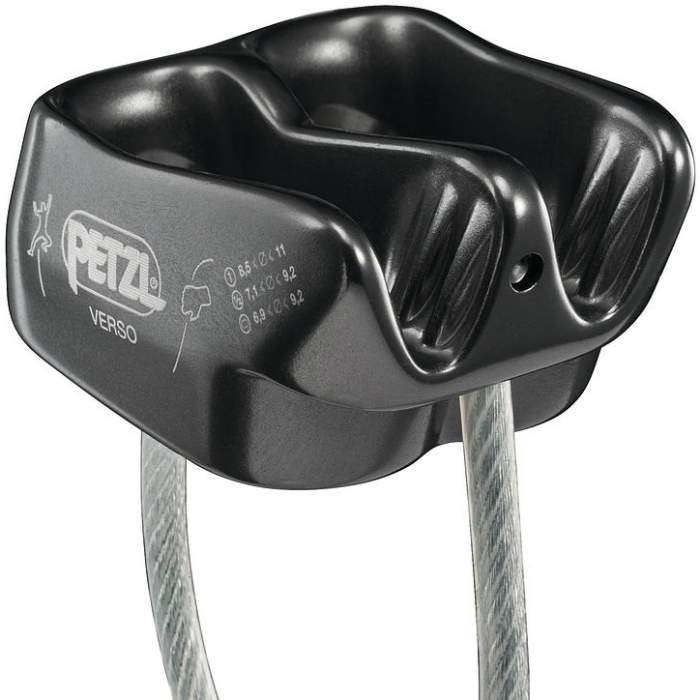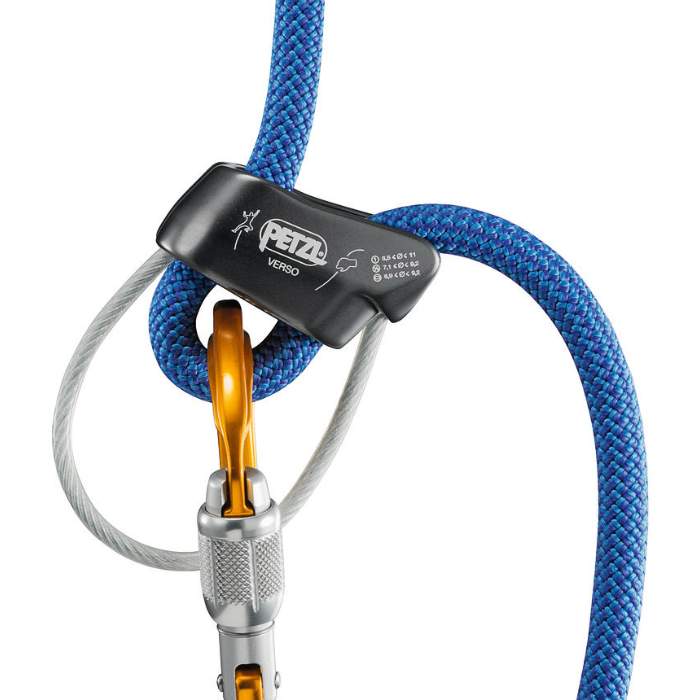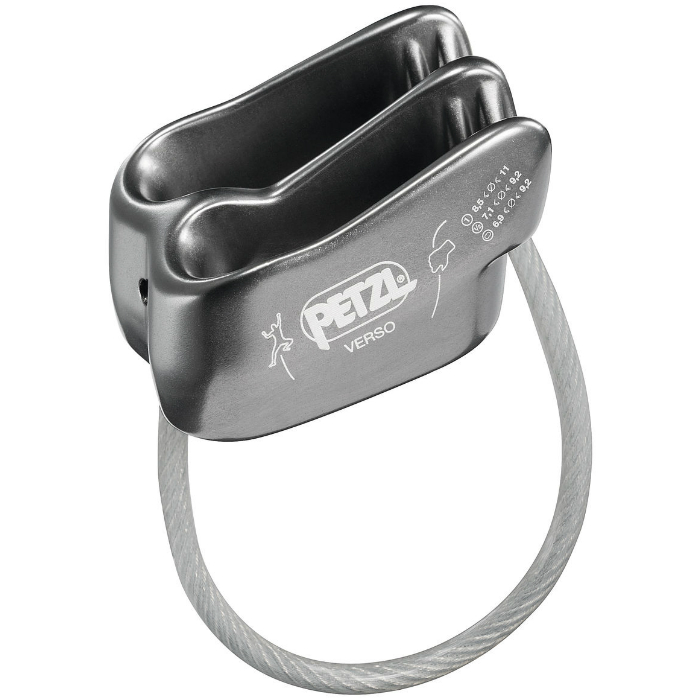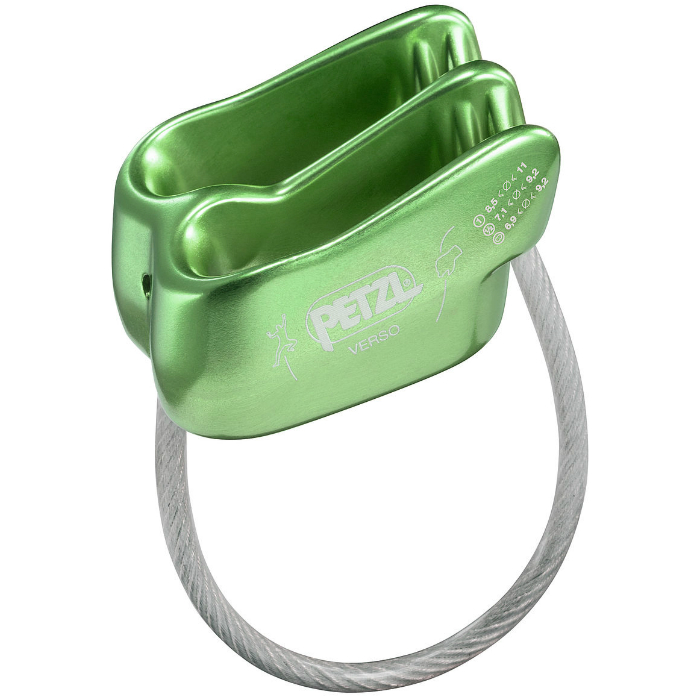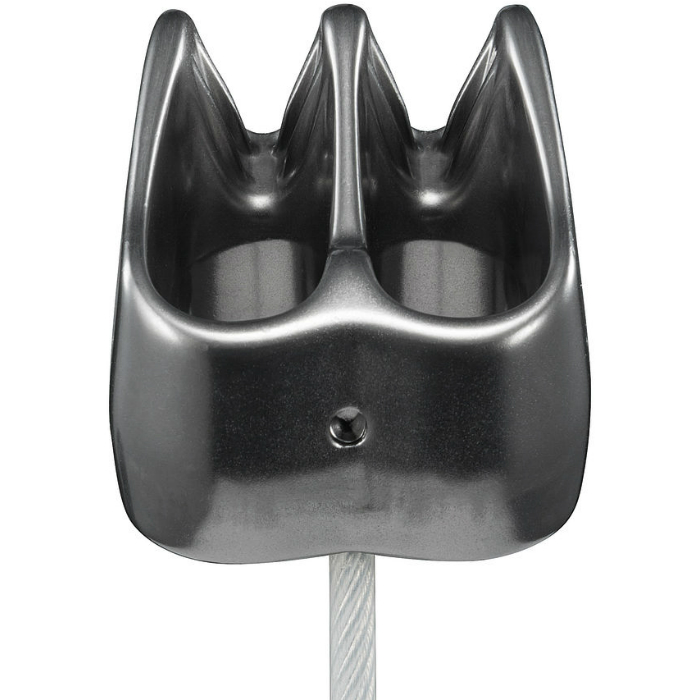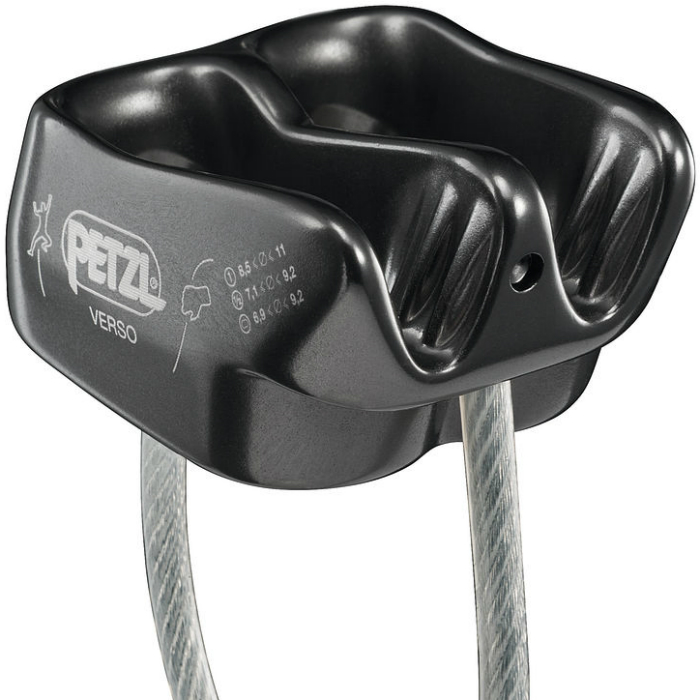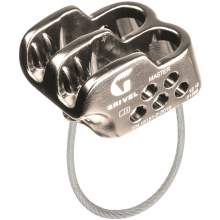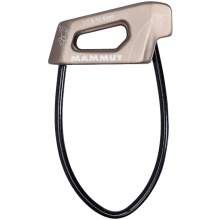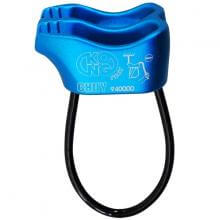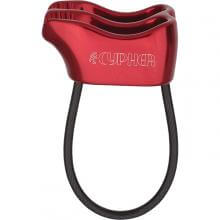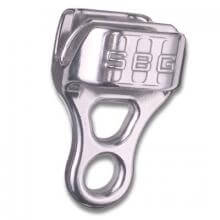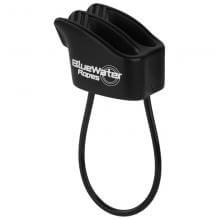Verso
Description
Lightweight belay/rappel device for a broad range of single, half and twin ropes.
VERSO is Petzl's lightest belay device. It accommodates most rope diameters: single ropes 8.5 to 11 mm, half ropes 7.1 to 9.2 mm and twin ropes 6.9 to 9.2 mm. It is intuitive and easy to use in the gym or at the crag; well suited for learning how to belay. The specific design of the rope slots allows the rope to glide smoothly and reduces wear.
Description
- Adapted to a broad range of rope diameters:
- V-shaped friction grooves enable controlled braking - Easy to use:
- classic belay technique with both hands on the rope
- ropes glide smoothly through the device
- can be used for rappels
- rope installation diagrams for belaying and rappelling engraved on the device - Durable and lightweight:
- the rounded design of the rope slots limits wear and extends the life of the device
Retail price
When you click a link below and then checkout online, no matter what you buy (climbing gear or not), we get a small commission that helps us keep this site up-to-date. Thanks!
Device Type  Device TypeTubeThe most commonly used belay type also called an “ATC” or “tuber.” Other than a distinction between other belay device types, “Tube” is a rarely used term, most climbers just assume you're talking about this style when they refer to your "belay device." 
Figure 8Mostly used in rescue, canyoneering, tactical, work safety, or by old school climbers and rappellers. One reason they went out of popularity with recreational climbers is because they tend to create twists in the rope. 
Brake AssistThese devices assist in stopping the rope when a climber falls or hangs on the rope. 
Often referred to as “auto-blocking” but that’s not the official terminology because no belay device should be assumed to work automatically by itself, even if it feels like it does (or does most the time). PlateWhen simplicity is a must, or you started climbing before Tubers were the norm. Bonus: They tend to be very light weight. 
DescenderFor rappelling, not for belaying a lead climber or top-roping. 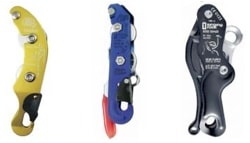 |
Tube |
Weight (g)  Weight (g)In grams, the weight, as stated by the manufacturer/brand. |
55 g |
Belay Brake Assist  Belay Brake AssistThis is when the belay device significantly reduces the amount of holding power the belayer must exert to stop a fall and hold a climber. This is also called "assisted-braking" as the device must hold a significant amount of the climber’s weight; this term does not include friction-adding "teeth" found on some tube style belay devices. Confusingly referred to as “auto-blocking” or “auto-locking” these terms wrongly imply the device will always, automatically, stop a fall or hold a climber even if the belayer/rappeller is hands-free. These devices are not meant to be used without a hand on the braking side of the rope; the belayers/rapppeller brake hand should always be on the brake rope. Worth ConsideringMost of the mechanical brake assist devices only hold a single strand of rope and are not capable of double-strand rappelling (the most common method of rappel). |
No |
| Rope Options | 1 or 2 ropes |
Guide Mode  Guide ModeThis is when you belay directly off the anchor instead of your harness. Guide mode is helpful if you climb outdoors a lot because it reduces the holding power required from the belayer. When your partner falls or rests, the weight of the climber is held mostly by the anchor and the belay device. Tubers and PlatesWhen belaying in "guide mode," the tubers and plates turn auto-blocking. During a fall, the climbing rope pinches the slack rope, completely stopping the movement of either rope. A common guide mode setup shown below. 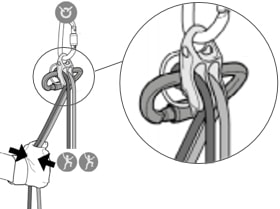
Mechanical Brake Assist DevicesThere is no difference in the functionality of the device. A brake-hand should always be on the rope to ensure the climber is caught in the case of a fall. A common guide mode setup shown below. 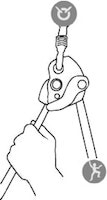
Where guide mode is used
Learn Morehttp://www.climbing.com/skill/essential-skills-auto-blocking-belay-devices/ |
No guide mode |
Teeth  TeethTeeth are only seen on tube devices. They add friction that helps grip the rope for more belaying control. This is helpful for belaying heavier climbers. Teeth are becoming standard on new tube devices. 
Worth ConsideringTeeth do wear out. You can limit wear by rappelling on the side without teeth (if you don’t need the extra friction). Once they’re worn, you’ll still have a usable belay device, just less friction. |
Yes |
Rope Range (mm)  Rope Range (mm)The range of rope diameters, in millimeters, that the manufacturer/brand specifies can safely be used. This is the best case scenario and does not necessarily take into consideration that certified ropes have a tolerance of +/- .3 mm. Recently, manufacturers have started to add an "optimized" rope range -- this is the range that will result in the nicest handling of the belay device. | 6.9 mm
- 11.0 mm
single: 8.5 - 11.0 half: 7.1 - 9.2 twin: 6.9 - 9.2 |
Certification  CertificationsThe main climbing gear certifications are CE and UIAA--and normally the UIAA creates the rules that the CE body also supports. When possible, we try to list all the certifications the product carries. To sell a climbing product in Europe, the device must be CE certified. There are no official requirements to sell climbing gear in the US. The UIAA certification is a voluntary process. Learn MoreRock and Ice Certifications Guide |
EN, UIAA |
Pretty Good
by CampingSam on 02/6/2019Overall the Petzl Verso fulfills its role as a basic tube-style belay device. These designs are great for new or experienced climbers that appreciate simplicity and a good deal. When compared with its direct competition in this class though, we noticed a few small drawbacks in lock-off strength and durability. Nevertheless, the Verso is a capable belay device and well worth your consideration.
A checklist to monitor your belay device, it helps you to know when to retire your belay device.
Describes with words and helpful photos, how to protect your belay device and other metal equipment.
Helpful insruction for how to inspect Verso belay device.
This instruction explain how to correctly use VERSO. Only certain techniques and
uses are described.

